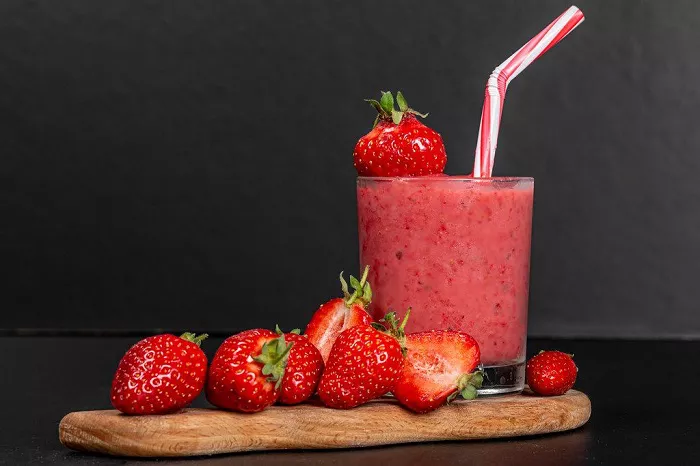Cassava cake, a beloved dessert in many tropical regions, holds a special place in the hearts and palates of those who have had the pleasure of trying it. This delectable treat, made from the humble cassava root, offers a unique blend of flavors and textures that make it a standout among desserts. In this exploration, we will uncover what cassava cake is, its ingredients, preparation, and the cultural significance it holds in various parts of the world.
Cassava Cake: The Tropical Sweet Sensation
Cassava cake is a dessert that primarily features cassava root as its main ingredient. This starchy tuber, native to South America, is a dietary staple in many tropical regions. Cassava root is known for its versatility and is used in various culinary applications, including the creation of this delightful cake. Here’s what defines cassava cake:
Ingredients: The key ingredients of cassava cake typically include grated cassava root, coconut milk, sugar, and eggs. Some variations may incorporate ingredients like condensed milk, butter, and cheese for added richness and flavor.
Texture: Cassava cake boasts a unique texture, combining the creaminess of coconut milk with the slightly grainy texture of grated cassava. When properly prepared, it offers a delightful contrast between a tender, custard-like top layer and a firmer, more textured bottom layer.
Flavor Profile: The flavor of cassava cake is subtly sweet, with the natural sweetness of cassava enhanced by sugar and the richness of coconut milk. The addition of other ingredients like cheese or condensed milk can provide variations in taste.
Preparation and Baking:
Here’s a basic outline of how cassava cake is prepared:
Peeling and Grating Cassava: The cassava root is peeled, cleaned, and grated to obtain cassava shreds.
Mixing Ingredients: The grated cassava is combined with coconut milk, sugar, eggs, and any additional flavorings or ingredients. The mixture should have a creamy consistency.
Baking: The mixture is poured into a baking dish and baked until it sets. The top layer typically forms a lightly golden, custard-like texture.
Toppings: Once baked, cassava cake can be topped with grated cheese, coconut flakes, or a drizzle of condensed milk for added flavor and presentation.
Cultural Significance:
Cassava cake holds cultural significance in various regions where cassava is a dietary staple. In the Philippines, for example, it is a popular dessert often served during celebrations and special occasions. In some Latin American countries, similar cassava-based desserts are enjoyed.
Serving and Enjoyment:
Cassava cake is best enjoyed as a dessert or snack, either warm or at room temperature. Its subtle sweetness and unique texture make it a delightful treat on its own or with a cup of tea or coffee.
In Conclusion:
Cassava cake is a delightful tropical dessert that celebrates the versatility of cassava root. Its simplicity, unique texture, and subtly sweet flavor have made it a cherished treat in many cultures. Whether you’re exploring tropical cuisine or seeking a unique dessert experience, cassava cake is a delightful choice that offers a taste of the tropics in every bite.
FAQs about cassava cake:
1. What is cassava root and where is it commonly grown?
Cassava root, scientifically known as Manihot esculenta, is a starchy tuber native to South America. It is a staple food in tropical regions and is grown in countries across Africa, Asia, and the Americas.
2. How does cassava cake differ from other types of cakes?
Cassava cake stands out due to its use of grated cassava root, which gives it a distinctive texture. It is also known for its subtly sweet flavor, often enhanced by ingredients like coconut milk. This sets it apart from cakes made with flour-based batter.
3. What gives cassava cake its unique texture?
The unique texture of cassava cake is primarily attributed to the combination of grated cassava root and coconut milk. The cassava provides a slightly grainy texture, while the coconut milk contributes creaminess. Proper baking techniques also play a crucial role in achieving the desired texture.
4. Can cassava cake be made gluten-free?
Yes, cassava cake is naturally gluten-free since it does not contain wheat flour. It relies on grated cassava root, which is a gluten-free ingredient. However, it’s important to ensure that all other ingredients used in the recipe are also gluten-free.
5. Are there variations of cassava cake in different cultures?
Yes, cassava cake has variations in different cultures and regions. For example, in the Philippines, it is often topped with cheese and condensed milk. In some Latin American countries, similar cassava-based desserts are prepared with regional variations in ingredients and flavors.
6. Is cassava cake a healthy dessert option?
Cassava cake is a naturally gluten-free option, which can be beneficial for those with gluten sensitivities. However, it is still a dessert and contains sugar, which should be consumed in moderation. The addition of coconut milk, while flavorful, also adds calories.
7. Can cassava cake be served warm or cold?
Cassava cake can be enjoyed both warm and at room temperature. Some people prefer it slightly warm, while others like it chilled. The texture and flavor can vary slightly depending on how it’s served.
8. How long does cassava cake typically last and how should it be stored?
Cassava cake can be stored in an airtight container in the refrigerator for up to 3-4 days. To maintain its freshness and texture, it’s best to store it in a cool, dry place and avoid exposure to moisture.
9. Can I make cassava cake without eggs for a vegan version?
Yes, it is possible to make a vegan version of cassava cake by using egg substitutes like flaxseed meal or aquafaba. Additionally, plant-based alternatives can be used for ingredients like coconut milk.
10. Are there any common variations or toppings for cassava cake?
Common variations and toppings for cassava cake include adding ingredients like cheese, condensed milk, or coconut flakes for added flavor and presentation. Some recipes also incorporate unique toppings like fruit preserves or flavored syrups.

























